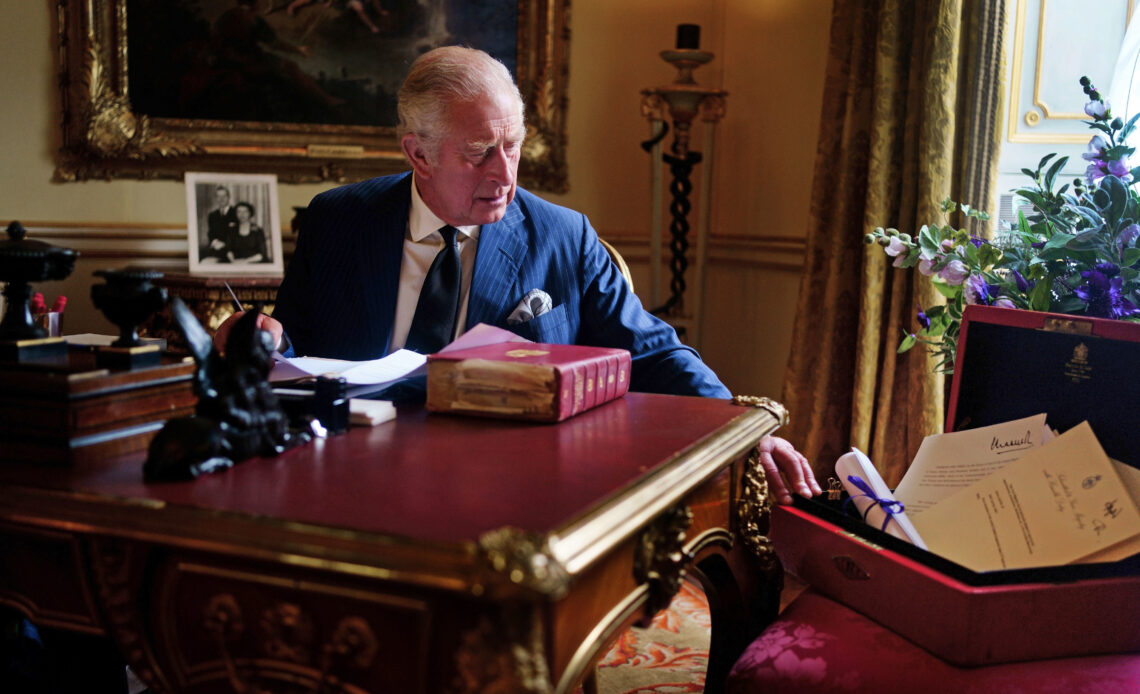
The final seven days of court mourning after the death of Queen Elizabeth II have finished, and the Royal Family has been back to business. The new Prince and Princess of Wales have been in Wales for the first time in their new role, and King Charles has also been moving forward in his reign with a new official cypher.
On Monday, 26 September, King Charles III’s royal cypher for England, Wales, and Northern Ireland, as well as his royal cypher for Scotland, was shared. While many items will continue to be used with the late Queen’s cypher, the new King’s cypher will be introduced.
Less than a month into his reign, Charles’s cypher has been put to use. The Royal Family shared the news and history of the new cypher on their official Twitter account:
“The first letters have been franked with the new cypher of The King in the Court Post Office at Buckingham Palace today.
“The cypher is the Monarch’s monogram, consisting of the initial of their name combined with an ‘R’ for Rex (Latin for King) or Regina (Latin for Queen).
“The first franking stamp incorporating the Royal cypher dates to 1901, introduced by Edward VII, who was instrumental in setting up the Court Post Offices in Buckingham Palace.
“The cypher was introduced at a time when the Monarch was seen by very few people, to create identity.“
Royal Mail postboxes will not be changed to the new King’s cypher, but new postboxes will bear the new monarch’s cypher.
Both stamps and currency that bear the late Queen’s image and cypher will continue to be legal and can be used. Royal Mail will be issuing stamps for the new King’s reign in mid-November, with pre-orders available now. The Royal Mint has also stated that currency with King Charles’s image will start being produced by the end of 2022.

